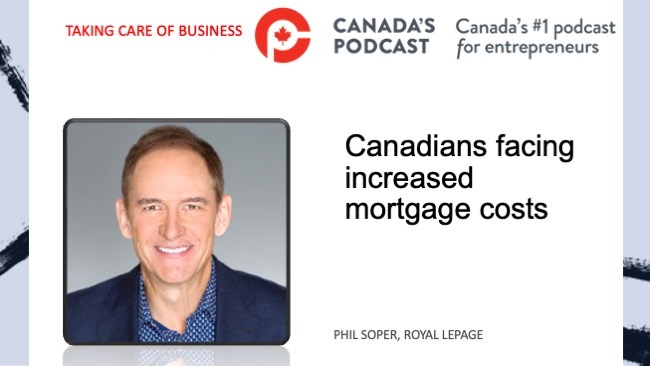According to Equifax Canada’s most recent Market Pulse consumer credit trends and insights report, total consumer debt in Q4 2022 has risen to $2.37 trillion, up 6.2 per cent from the same period in 2021.

Rebecca Oakes
The report said mortgage debt contributes to 75 per cent of overall consumer debt in Canada but rising interest rates and the cost of borrowing has slowed the Canadian housing market leading to a significant drop in new mortgage originations during the last quarter of 2022. Non-mortgage debt levels continued to rise and were up by 5.4 per cent compared to Q4 2021. This increase was visible across all consumer segments but especially among millennials aged 27-42 which saw an above average jump of 8.4 per cent in non-mortgage debt levels, added the report.
“Millennials are entering the most credit-active phase of their lives in a very challenging economic period,” said Rebecca Oakes, Vice-President of Advanced Analytics at Equifax Canada. “They may need to budget accordingly to deal with the higher cost of day-to-day necessities, as well as increasing high-interest loans.”
Despite the continuing market concern of rising interest rates for homeowners, it was consumers without a mortgage that saw the greatest jump in missed payments during the fourth quarter of 2022, said Equifax. Compared to 12 months prior, the proportion of non-mortgage consumers who missed a payment on a credit product was up by 11 per cent in Q4 2022. In the same time period, consumers with a mortgage only saw a six per cent rise in their proportion of missed non-mortgage payments, it said.
The report found that in the last 12 months, the 90+ day volume delinquency for credit cards and auto loans rose 23 per cent and 11 per cent respectively. Levels remain lower than before the pandemic, but this gap is getting smaller.
Equifax warned that severe financial stress is mounting for some individuals, with a higher proportion of consumers filing for consumer proposals, a type of insolvency, than 12 months ago. Consumer proposals were up by 26.4 per cent in Q4 2022 compared to last year but remained lower than pre-pandemic levels. The exception is with seniors (aged 65+), where proposal intake is now higher than 2019 levels.
“We are starting to see increases in missed payments on credit cards and auto loans, particularly for lower-income consumers,” said Oakes. “The ability to manage finances through a sustained period of high inflation with rising living costs is unfortunately proving too much for some individuals. We are also seeing additional early warning signs that this may be the start of things to come. ”
Age Group Analysis – Debt & Delinquency Rates (excluding mortgages)
| Average Debt (Q4 2022) | Average Debt Change Year-over-Year (Q4 2022 vs. Q4 2021) | Delinquency Rate ($) (Q4 2022) | Delinquency Rate ($) Change Year-over-Year (Q4 2022 vs. Q4 2021) | |||||
| 18-25 | $8,091 | -2.73% | 1.47% | 30.59% | ||||
| 26-35 | $17,191 | 2.24% | 1.49% | 23.16% | ||||
| 36-45 | $26,048 | 4.54% | 1.11% | 16.73% | ||||
| 46-55 | $32,508 | 3.96% | 0.83% | 14.50% | ||||
| 56-65 | $26,628 | 2.31% | 0.74% | 10.80% | ||||
| 65+ | $14,338 | -0.14% | 0.87% | 10.94% | ||||
| Canada | $21,121 | 2.10% | 1.01% | 17.09% | ||||
Major City Analysis – Debt & Delinquency Rates (excluding mortgages)
| City | Average Debt (Q4 2022) | Average Debt Change Year-over-Year (Q4 2022 vs. Q4 2021) | Delinquency Rate ($) (Q4 2022) | Delinquency Rate ($) Change Year-over-Year (Q4 2022 vs. Q4 2021) | ||||
| Calgary | $24,461 | -2.48% | 1.20% | 6.92% | ||||
| Edmonton | $24,058 | -1.05% | 1.52% | 13.73% | ||||
| Halifax | $20,964 | 0.23% | 1.10% | 18.34% | ||||
| Montreal | $16,416 | 2.99% | 0.87% | 13.40% | ||||
| Ottawa | $19,033 | 3.98% | 0.91% | 18.43% | ||||
| Toronto | $20,137 | 1.97% | 1.25% | 23.98% | ||||
| Vancouver | $22,502 | 2.35% | 0.79% | 21.53% | ||||
| St. John’s | $23,577 | -1.01% | 1.21% | 7.99% | ||||
| Fort McMurray | $37,908 | -0.21% | 1.74% | 14.52% | ||||
Province Analysis -Debt & Delinquency Rates (excluding mortgages)
| Province | Average Debt (Q4 2022) | Average Debt Change Year-over-Year (Q4 2022 vs. Q4 2021) | Delinquency Rate ($) (Q4 2022) | Delinquency Rate ($) Change Year-over-Year (Q4 2022 vs. Q4 2021) | ||||
| Ontario | $21,474 | 3.56% | 0.98% | 23.24% | ||||
| Quebec | $18,495 | 2.47% | 0.69% | 14.38% | ||||
| Nova Scotia | $20,705 | 0.00% | 1.31% | 18.00% | ||||
| New Brunswick | $21,916 | -0.43% | 1.29% | 5.52% | ||||
| PEI | $22,349 | 1.76% | 0.91% | 25.79% | ||||
| Newfoundland | $23,008 | -0.01% | 1.29% | 11.45% | ||||
| Eastern Region | $21,678 | -0.04% | 1.27% | 12.43% | ||||
| Alberta | $24,724 | -1.78% | 1.37% | 9.01% | ||||
| Manitoba | $17,073 | 1.50% | 1.33% | 21.44% | ||||
| Saskatchewan | $22,428 | 0.01% | 1.34% | 16.08% | ||||
| British Columbia | $21,810 | 2.58% | 0.91% | 18.58% | ||||
| Western Region | $22,425 | 0.54% | 1.16% | 13.43% | ||||
| Canada | $21,121 | 2.10% | 1.01% | 17.09% | ||||
* Based on Equifax data for Q4 2022

About Us
Canada’s Podcast is the number one podcast in Canada for entrepreneurs and business owners. Established in 2016, the podcast network has interviewed over 600 Canadian entrepreneurs from coast-to-coast.
With hosts in each province, entrepreneurs have a local and national format to tell their stories, talk about their journey and provide inspiration for anyone starting their entrepreneurial journey and well- established founders.
The commitment to a grass roots approach has built a loyal audience with over 120,000 downloads and thousands of subscribers on all our social channels and YouTube. Canada’s Podcast is proud to provide a local, national and international presence for Canadian entrepreneurs to build their brand and tell their story.





